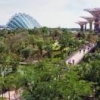Search the Community
Showing results for tags 'singapores'.
-
Hey, street-smart drivers! Test yourself in Singapore's favourite automotive telematch, Torque On The Move! Beat the rest and win the first prize worth over $4500! We have many more attractive gifts and prizes to be won! Happening on 27 August 2016, sign up with a friend and enjoy loads of fun, challenges and lots of driving. Our early bird registration discount is ending on July 17, 2016 with limited slots left, so hurry and register now! Registration opens now, sign up at www.torque.com.sg/totm16
-
http://www.themalaymailonline.com/features/article/excavation-jackpot-at-singapores-empress-place-archaeological-dig ‘Excavation jackpot’ at Singapore’s Empress Place archaeological dig. Situated in front of the Victoria Theatre and Concert Hall at Empress Place, the archaeological excavation is organised by the National Heritage Board, with support of the Urban Redevelopment Authority, as part of its efforts to commemorate 31 years of archaeology in Singapore. — Today pic. SINGAPORE, April 16 — Excavation works at Empress Place — the biggest archaeology project to be conducted in Singapore — have uncovered the largest-ever haul of findings here, said National Heritage Board (NHB) today. The two-month-long project, situated in front of the Victoria Concert Hall, came to an end last Sunday (April 12), with an estimated two tonnes worth of artefacts found. It was a collaboration between NHB and the Nalanda-Sriwijaya Centre of the Institute of Southeast Asian Studies. These artefacts, said lead archaeologist Lim Chen Sian, provide even more insights into Singapore’s early beginnings, and may reveal more details about life back in Singapore even before the early colonial days. A total of 15 artefacts were unveiled during a press conference this morning, including Buddhist figurines and a piece of porcelain measuring 34cm in diameter said to be of “imperial grade quality”. NHB assistant chief executive office for Policy and Development Alvin Tan, described the project as Singapore’s “excavation jackpot”, adding that some of the more significant artefacts will be put up for displays in the museum once the necessary procedures, cataloguing and research work has been completed. According to Lim, a day of excavation would require another 21 days of post-excavation work, which involves washing and cleaning the artefacts. It would take another two to three years before the artefacts can be exhibited. — Today
- 10 replies
-
- 8
-

-
- excavation
- singapore
-
(and 6 more)
Tagged with:
-
I'm too young to know this. any one can enlighten on this trade? it sounds very interesting. operates like a modern day bank. http://news.asiaone.com/news/singapore/singapore%E2%80%99s-first-%E2%80%98venture-capitalists%E2%80%99 Beside the Singapore River, near the Asian Civilisations Museum, sits a man made of bronze, in front of a low table. He has a large ledger open in front of him, a cloth draped over his shoulder, and his arm is raised as if in greeting. Who was this man? And how did he impact the development of Singapore? The sculpture, aptly named From Chettiar to Financier, was installed in 2002. It is artist Chern Lian Shan's representation of a man from a community that was known for its distinct role in Singapore's development as a trade centre: The Chettiars. Prior to 1900s, the Chettiars were nearly the only source of capital for entrepreneurs and as the earliest financiers, they have often been called the founders of modern banking. Trading background The Chettiars came from their homeland, which was in the southern region of Tamil Nadu (India), an area broadly known as Chettinad. Interestingly, the Chettiars did not begin as financiers. They began as traders, in the 18th century, trading salt and other commodities along the coastal region of Tamil Nadu, and by the 19th century, the Chettiars were already venturing out of their territory, and going overseas in search of new economic opportunities. They first migrated to Sri Lanka and Burma, where they continued trading, with financing being only a secondary business. The colonial authorities had no access to remote parts of these countries and were also unwilling to take the risk to lend to the people there, and so encouraged them. As their reputation as financiers began to grow in Burma, the Chettiars were drawn to new opportunities. Singapore, with its geographical proximity to China and Malaysia, was quickly becoming a natural hub for trade and finance. The Singapore River, especially, was an important thoroughfare, and so it followed that most trading activities occurred around that area. When the Chettiars arrived, they were one of the only communities who had ready capital to invest, and consequently, had no trouble setting up their businesses on the banks of the river, around Market and Chulia Streets. The Chettiars are often thought to have founded modern banking, because they introduced the concepts of debit, credit, expenditure, profit and loss. They were also perhaps the first in the region to introduce a unified document - the balance sheet - reflecting the financial status of a business. And they used this to evaluate the viability of each of the businesses they were financing. Additionally, they were meticulous in their record keeping. Dr Subramanian Thinnappan, a Tamil professor with the National University of Singapore, has researched the Chettiars and their migration since his own student days. He co-authored the book Nagarathars in Singapore with Mrs Soundara Nayaki Vairavan. He says: "The Chettiar accounting system was very different from the other (few) banks that existed. Firstly, it was in Tamil, and much of their calculation was done mentally. They were trained that way." Singapore Management University's Jayarani Tan and Tan Wee Liang have done extensive research on the early Chettiar community. Their research paper titled Informal Banking and Early International Entrepreneurs: The Case of the Chettiars was published in 2012. In their paper, they say that, although the Chettiars were not micro-financers in the way that we understand today, they were well known for their informal banking activities in the early part of the 19th century. The Chettiars financed everything from China's opium trade, to rubber, tin, real estate and retail. They also sometimes funded weddings, funerals and even education. Mr Subbiah Lakshmanan, an accountant and financial controller, has shared a lot of his family's photos and information about the early Chettiar community with the Asian Civilisations Museum. His grandfather Nachiappa Chettiar was one of the early financiers, and Mr Subbiah says that their business included many financial services, not just lending. "They provided working capital loans and investment capital as venture capitalists, syndicated loans for large undertakings, took deposits (with interest) and safekeeping of valuables, organised funds transfers to regional cities like Rangoon, Saigon, Medan, Kuala Lumpur, Chennai and Calcutta. They also issued demand drafts and discounting of demand drafts." The Chettiars were interested in lending only to entrepreneurs and only if there was a business interest attached. So rather than call them "moneylenders", Mr Subbiah stresses they were more financiers and venture capitalists. "They were 'private financiers', as they were described by the British," he adds. Many small traders, businessesmen or individuals who were unable to secure loans from the Chinese and European banks often turned up at the Chettiars' doors. Borrowing from the Chettiars was a simple, non-bureaucratic process. According to Dr Thinnappan: "It was easier for many businessmen to get the loans from the Chettiars, with IOU notes, and some collateral when the loans were high. The Chettiars also watched the borrowers closely, so they knew who was able to repay their loans, and who had businesses that were worth investing in." At times, if a substantially large loan amount was required, many Chettiar businessmen would pool their resources and lend the money, thereby sharing the risk of the investment. Interest rates varied, depending on the size of the loan and the party who was being lent the money. The rates of interest were fixed at a temple committee meeting each month and it could range anywhere from between 13 and fi Life in the kittingi The Chettiars operated their businesses out of kittingis, which were long narrow buildings, divided into several rooms of roughly 100 sq ft each. It was exclusively male and was used as both working and living quarters. Living and working together preserved their communal distinctiveness and also blurred the lines between work and community. Each kittingi functioned as a self-sufficient community, with an in-house cook, a regularly visiting barber and laundry man. Gambling and alcohol were not permitted and no women were allowed to stay in the kittingi. Mr Subbiah Lakshmanan, who grew up in such a kittingi, remembers his time there very fondly. "It was a simple life; our needs were simple. As young boys in the quarters, we were constantly engaged by what was going on around us. We had to take responsibility for ourselves and we were often sent off to do errands for the businessmen. "We felt very important doing those little tasks. And although our mothers were not there, we never felt lonely. There was always someone around and we knew which uncle to go to for sweets or ice cream!" A typical day at the kittingi began early, and the men worked until lunchtime. After the heat of the afternoon had passed, they met clients, and did the administrative work. Once the day's work was done, the Chettiar businessmen spent their evenings praying at the temple, playing cards and board games or light sports, like badminton. Occasionally, they treated themselves to a Tamil movie at the movie theatres in North Bridge Road, or spent the evening on the beach, near what is today the Esplanade. "The first 'Little India' in Singapore was not on Serangoon Road. It was around Market Street and Chulia Street, which is the area around Raffles Place today. There were Indian sari shops, spice grinders, and Indian eating places like Banana Leaf. And many business houses like Syed Mohammed Rice Traders, Jumabhoy's, Nomanbhoy's, Second Chance, Mohamed Mustafa, and P. Govindasamay Pillai all started there," says Mr Subbiah. The Chettiar businessmen didn't have the distraction of family, whom they had left in their homeland, so their leisure activities were simple. But, aside from the joys of communal living, life in the kittingi meant discipline. The younger male members of the family were interned into the business, drawing on the superior wisdom of the older members of the kittingi. Dr K. Vellayappan, a well-known paediatrician who consults at Mount Alvernia Hospital and at a clinic in Ang Mo Kio, also grew up in a kittingi. He says his experience of living there has stood him in good stead. "My father brought me to Singapore when I was just nine years old. Living in the kittingi, we learnt a lot. We started out as errand boys, running around getting things, buying stamps or getting papers stamped. We worked hard, and it really moulded our character," he recalls. For any young boy who joined kittingi life, there was also a clear career path laid out. He would typically begin as an office boy and progress to becoming a clerk. By his mid-20s, if he were seen to have an aptitude for the business, would rise to the level of a kootali or agent and then progress to becoming a pangaali or partner, after which he himself became the owner, the mudalaali. Through this method, the Chettiars also learnt how to preserve their own best practices. And, interestingly, there was no nepotism. Every boy was treated fairly and with discipline, regardless of whether they were family or not. - See more at: http://news.asiaone.com/news/singapore/singapore%E2%80%99s-first-%E2%80%98venture-capitalists%E2%80%99#sthash.Fq4Q9QLs.dpuf
-
Singapore’s 5 coolest workplaces. http://www.straitstimes.com/news/business/more-business-stories/story/5-the-coolest-workplaces-singapore-20141127 SINGAPORE - More companies here are putting in the money and effort to spruce up their offices with fun designs and playful elements beyond the typical drab and grey cubicles, in the hope that this will keep staff happy and motivated. Here is a look at 5 workplaces that are possibly ‘cool’ enough for you to stay past knocking-off time. 1. Spencer Ogden Energy recruitment specialist Spencer Ogden’s Asia-Pacific headquarters in Eu Tong Sen Street boasts Astroturf flooring, reclaimed wood round tables, and American-style diners. It is also home to a large, bronze gong - which employees hit by way of celebrating each time they clinch a deal 2. SAP Singapore Need a nap while at work? This is not taboo at SAP Singapore, which sells and develops business management software. Employees can catch forty winks in a sleep pod – a reclining sofa fitted with a helmet-like dome for privacy. It is painted black on the inside, and comes with built-in audio speakers “The pod is imported from overseas and designed for power napping at work, to help employees recharge, manage stress and increase productivity,” managing director Kowshik Sriman told The New Paper. SAP’s office at the Mapletree Business City in Pasir Panjang also features cosy corners, or sitting rooms, with swing-like seats suspended from the ceiling. There is even a foot-reflexology path to rejuvenate tired feet 3. Google Singapore Search engine giant Google has come a long way since its humble beginnings in a dorm room and a garage. Hammocks hang from one part of its Asia-Pacific headquarters in Asia Square, where employees can find a quiet spot to work. To encourage its employees to make healthy eating choices, Google Singapore provides organic breakfasts, lunches and to-go dinners free of charge at its well-stocked pantries and cafeterias, including one that resembles a Peranakan shophouse. 4. SapientNitro Employees at marketing and consulting agency SapientNitro often flock to its two outdoor garden terraces for a breath of fresh air. Decked with vertical greenery and hanging foliage, the garden terraces, used for casual meetings as well as company events and celebrations, also feature an in-built bar area. “It helps give the office a sense of calm and also allows for breakout sessions and team bonding activities amidst a peaceful setting – all the better to inspire creativity,” said Mr Kim Douglas, vice-president and managing director for the firm’s Singapore and Hong Kong operations. Meeting rooms at the office in Cecil Street are also lined with glass walls and whiteboard spaces, which are designed for conducive brainstorming sessions and effective visual conceptualising. 5. Spotify Singapore What is a day at Spotify without music? The commercial music streaming service’s office at Boat Quay comes with several Spotify Connect devices, where staff can share their playlists through the in-room speakers. Its open-concept office space also features adjustable standing desks and chill-out areas with bean bags. “Our ‘play everywhere’ concept allows us to become more productive and our office space is designed to help us to do exactly that,” said Ms Sunita Kaur, managing director (Asia). “We want Spotifiers to feel comfortable in their surroundings and create an environment that's a perfect mix of work and play.”
- 8 replies
-
- 6
-

-
- workplaces
- cool
-
(and 4 more)
Tagged with:
-
Just in on Yahoo news - PAP MP Inderjit Singh confronts Singapore’s hard truths in wide-ranging Facebook post.... https://sg.news.yahoo.com/pap-mp-inderjit-singh-confronts-singapore-s-hard-truths-in-wide-ranging-facebook-post-090404111.html "Quote" People’s Action Party Member of Parliament Inderjit Singh has written a lengthy – if surprisingly critical – commentary on the performance of the government under the ruling party in the past three years. The disconnect between Singapore’s wealth and citizens’ well-being, the importing of talent, the complacency and elitism in the top ranks of civil servants, and the national identity for Singapore’s young people – these were the issues the former deputy government whip raised in a Facebook post Monday night titled “Response to the President Address At the Re-Opening of 2nd Session of Parliament May 2014”. Known to be vocal about political issues – he spoke against the population White Paper that projected as many as 6.9 million people in the city-state by 2030 and eventually abstained from voting on it – Singh explained that he was sharing his thoughts on the social media platform since he was currently overseas and could not participate in the parliamentary debates on President Tony Tan Keng Yam’s address. An MP for the Ang Mo Kio group representation constituency, along with Prime Minister Lee Hsien Loong, Singh noted that after the general election in 2011, the government got a very clear signal from Singaporeans about the issues that affected them most and the government spent considerable time fixing these problems. The problems themselves were “created as a result of a decade long series of policy misjudgment linked to its ‘growth at all cost’ economic strategy” but he added that since then the government has done well in many areas, particularly in sorting out issues in housing, healthcare and even transport to some extent. He then elaborated on the areas that he believed had yet to be sufficiently tackled. Disconnect between Singapore’s wealth and citizens’ well-being Singh said that while the country has become richer, not all Singaporeans are reaping the benefits of that growth as some citizens face even tougher times coping with the rising cost of living than before. Even though Singapore has emerged relatively unscathed from the 2008 global economic crisis, Singh questioned if the lives of average Singaporeans had improved. He commended the Pioneer Package, but said that beyond it, “If someone were to ask me honestly whether the lives of all Singaporeans have become better in these last few years, I would not be able to do that.” Singh also disagreed with the government’s approach of linking asset appreciation to homes. He cautioned against “overly emphasizing the role of the home in providing for retirement adequacy” as this asset appreciation would instead create stress on the younger generation who would have to deal with rising house prices. He called it “an inter-generational transfer of wealth”, where young working Singaporeans pay elderly retirees inflated prices for their homes. The MP also criticized the promotion of medical tourism done by government restructured hospitals amid the crunch in hospital beds. He said, “Shouldn't the services in our government restructured be for Singaporeans and residents first?” Importing talent and creating wealth for citizens According to a recent wealth report by Barclays bank, Singapore has the fifth-highest concentration of millionaires in the world and was the fastest place for one to accumulate wealth, but Singh doubted that the rise in wealth had been equitable. Instead, he believed that a large number of the wealthy resident millionaires are new citizens or PRs who had “transplanted their wealth” into Singapore. He also suggested that the reported increase in Singaporeans’ median income was highly correlated to the increase in the number of new citizens and PRs. Singh wrote, “Today we are willing to achieve growth by transplanting what others, including foreigners can do into Singapore – an 'instant tree' mentality of sorts -- what pride do Singaporeans have in such a prosperity?” He added that “the ends have too often been used to justify the means.” While he praised the government for heading in the right direction with its “inclusive growth strategy”, he identified low wages as the root cause of the problem in creating wealth for citizens. Singh said, “I urge this government to further develop the [progressive wage] model”. He said, “Why not instead give everyone a decent salary so that they do not need to depend on government handouts to live comfortably?” Is Singapore a home — or a hotel? Singh also expressed his concerns about how members of the younger generation envision their future in Singapore. He shared his friend’s thoughts about the country. A 30-year-old man was quoted saying, “At times, I do not feel like Singapore is my home. Yes Singapore is a brilliant place to make money but not to live anymore.” He also lamented that Singapore “seems more and more like a 6 star hotel - emphasized by the huge amount of imported wealth and labour - where everything is perfect if you can pay the high room rates.” Singh believed that the influx of foreigners has “destabilized” Singapore a little and has “reversed our gains on building a national identity”. He admitted that “the government made a mistake of bringing in too many foreigners [too] fast”, as he had indicated in his speech on the White Paper in 2013. While it is not possible to ask new citizens and residents to return to their countries, Singh encouraged the government and Singaporeans to focus on making things work with “those who are committed to Singapore and treat Singapore as their own home" and not "bend backwards" to give privileges to those who see Singapore as a stepping stone. Singh also emphasized the need to keep in touch with talented Singaporeans students studying overseas, to “make them feel more wanted and welcome to come back” instead of having to bring in foreign talent. Complacency and elitism in top ranks of civil service Singh also spoke out against the complacency and elitism he “detected” in the top ranks of civil servants. He said, "today’s policy makers live in a different society from the average Singaporean”. The MP said that during his Meet-the-People sessions, he had encountered a number of residents who questioned the rationale of government policies. He urged the government to consider reorganizing the policy making process, to “reverse it to make it more bottom-up and driven by the man in the street” instead of the top-down approach of policies crafted by those seated in “an ideal clean and sterile policy lab or an ivory tower”. Singh had observed that the civil service’s top ranks are populated by scholars chosen for their academic achievements. He expressed concern that these scholars, who are “parachuted” to high positions at a young age, may not have the experience or understanding to craft policies for the rest of the population. Singh supported a different approach to talent management in the public service, saying that “we need the best people for the respective jobs not necessarily the best academically qualified for all the jobs.” Since it was published on Monday evening, Singh’s post has been shared over 400 times on Facebook, garnering over 400 likes. Comments thus far have been positive, applauding Singh for his insights and thanking him for speaking out. The CEO of a Singapore home appliances and electronics company, Singh has been an MP for 18 years. "Unquote"
- 311 replies
-
- 2
-

-
- pap mp inderjit singh
- inderjit
-
(and 5 more)
Tagged with:
-
so whats the story with the racing circuit?? did the project die? i heard it was stopped for an investigation - then ......nothing..... anyone know if its still being built???
- 12 replies
-
- Singapores
- racing
-
(and 1 more)
Tagged with:







